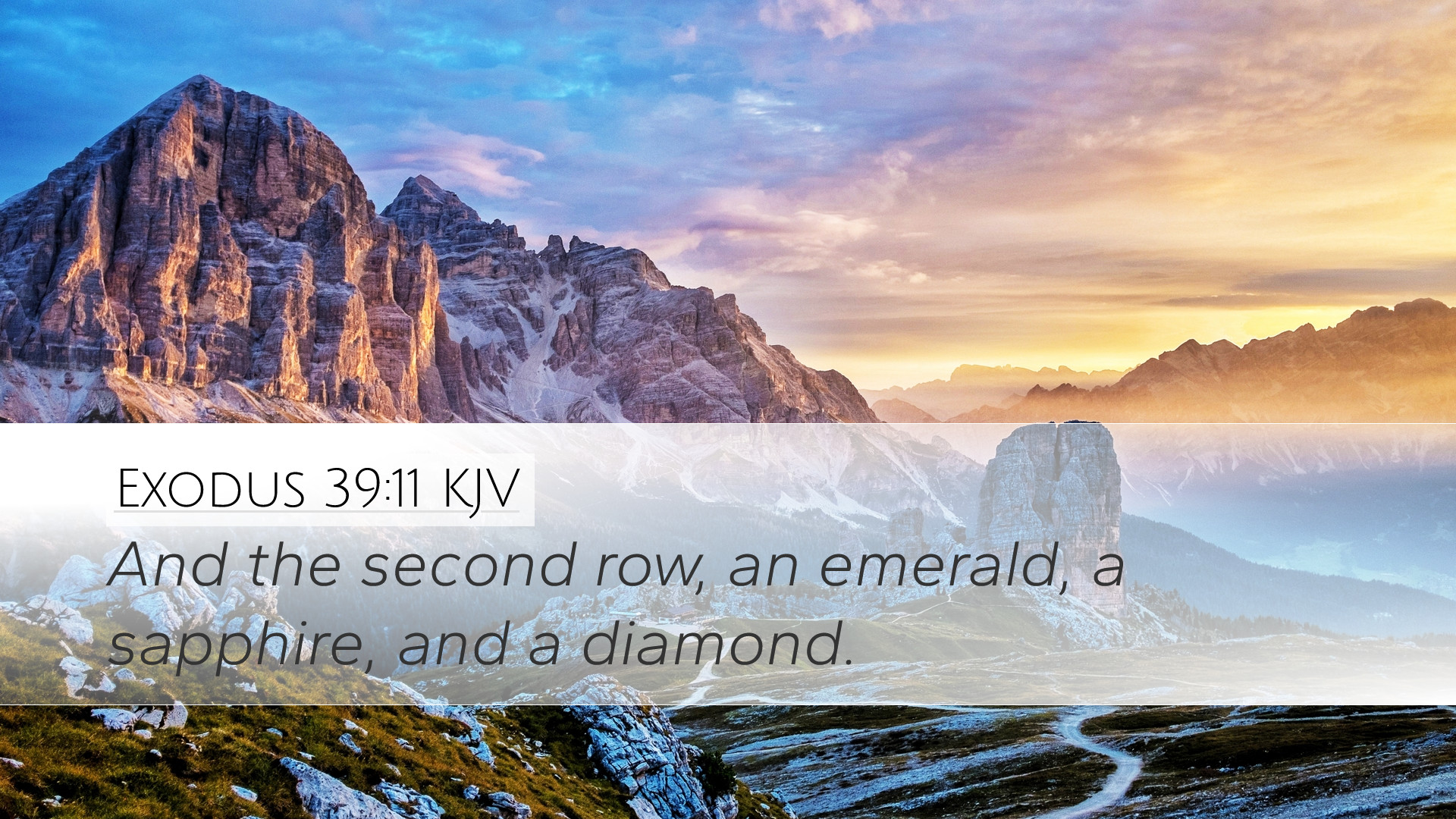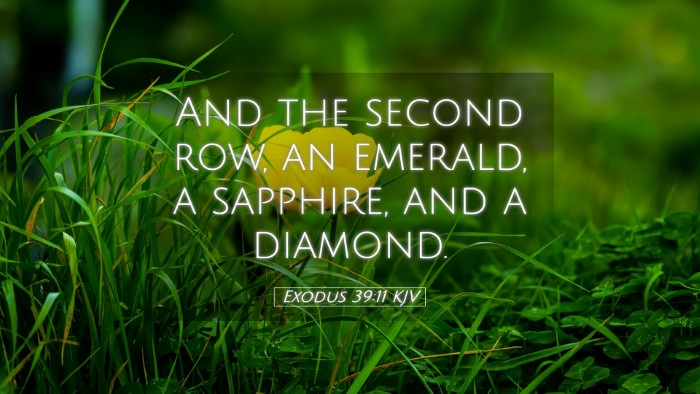Exodus 39:11 - Commentary
Verse: Exodus 39:11 - "And the second row was a turquoise stone, a sapphire, and a diamond."
Introduction
The careful crafting of the high priest's garments, particularly the breastplate, reveals not only the significance of aesthetic beauty in worship but also the profound theological meanings associated with each stone represented. In this context, religious leaders and scholars will find rich insights as they explore the symbolism inherent in the materials used in the tabernacle and the priestly attire.
Commentary Insights
Matthew Henry's Commentary
Matthew Henry reflects on the overall purpose of the breastplate, emphasizing its role as a means of divine communication. He notes that the twelve stones symbolize the twelve tribes of Israel, suggesting that the high priest carries the people ‘on his heart’ before God. In verse 11, the mention of the turquoise, sapphire, and diamond stands as a testament to God's beauty and glory:
- Turquoise: Often interpreted as a symbol of heaven and fulfillment, it represents the tribe of Dan, which is frequently associated with judgment and service.
- Sapphire: This precious stone signifies divine favor and wisdom. It calls to mind the heavens and God’s throne, thereby indicating the direct connection between God’s wisdom and Israel’s leadership.
- Diamond: Though not as common in biblical references, diamonds can symbolize strength and purity. Here, it symbolizes the enduring nature of God’s covenant with Israel, showcasing His commitment.
Henry emphasizes that the high priest's attire serves not merely a liturgical function but embodies a representation of the relationship between God and Israel.
Albert Barnes’ Notes on the Bible
Barnes provides a detailed analysis of the stones mentioned in Exodus 39:11, discussing their individual attributes and historical significance:
- Turquoise: Identified as a stone associated with divine vitality, it resonates with the creativity of God in forming His people.
- Sapphire: Known for its blue color, it is linked to divine revelation and the heavenly perspective, illustrating God's authority over His people.
- Diamond: Barnes suggests that this stone mirrors the clarity and sharpness of God's word. Just as a diamond cuts through darkness, so does the law of God illuminate the path for His people.
Barnes underscores that these stones, arranged in the priestly breastplate, reveal the multifaceted nature of God’s relationship with His people, advocating for a profound reverence in worship.
Adam Clarke's Commentary
Clarke elaborates on the craftsmanship involved in creating the high priest's garments, particularly focusing on the aesthetics and their spiritual implications:
- Significance of Colors: Clarke notes the distinct colors of the stones were intentional, symbolizing various aspects of God's creation and attributes.
- Divine Order: Each stone's placement in the breastplate reflects divine order. Clarke affirms that God's choice of stones was not arbitrary but deliberate, teaching that His people are precious to Him.
Furthermore, Clarke provides a theological perspective, stating that the high priest's role transcends mere representation; he is a mediator who bears the weight of Israel's sins before God. Thus, each stone serves as a reminder of the significance of intercession and representation.
Theological Implications
The rich symbolism found in Exodus 39:11 offers numerous implications for contemporary faith communities:
- Emphasis on Intercessory Prayer: Just as the high priest carried the tribes of Israel on his heart, believers today are called to lift one another in prayer, recognizing their collective identity in Christ.
- Understanding Beauty in Worship: The beauty of God’s creation reflected in the precious stones serves as an invitation for churches today to approach worship with creativity and reverence.
- Divine Representation: The high priest's garments remind believers of their identity as priests before God, charged with representing His light and love in the world.
Conclusion
Exodus 39:11 serves as a significant reminder of God’s meticulous care for His people, capturing the beauty and complexity intrinsic in His covenant relationship with Israel. Through the insights of Henry, Barnes, and Clarke, we discover a layered understanding of intercession, divine order, and the call to express beauty in worship. As pastors, students, theologians, and scholars reflect on this verse, they are urged not only to appreciate the historical context but to apply its timeless truths to their ministries and lives today.


